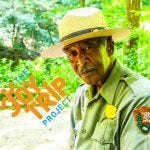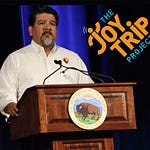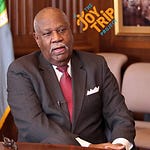Long before the National Park Service was established, the geological site commonly known as Mammoth Cave in the state of Kentucky was a popular tourist attraction. Open to the public for guided tours beginning in 1830’s this massive labyrinth of underground caverns and tunnels was first explored by enslaved people whose legacy of stewardship spans more than 5 generations. A Black man named Stephen Bishop lead much of the earliest explorations of the cave system and named many of the most prominent features. An expert on the largest cave in the world that winds more than 406 miles beneath the Earth’s surface, Bishop was said to have guided the most prominent scientists, political figures and writers of the mid-19th century including the poet Ralph Waldo Emerson. It was on a visit to Mammoth Cave guided by Bishop in 1857 that Emerson wrote the essay Illusions, inspired by a feature called the Star Camber. But when Mammoth Cave was established as the 26th National Park on July 1, 1941, local residents Black and white, were forced off the surrounding land to make room for the new federally managed recreation area. Under the provisions of Jim Crow era segregation, Black Americans were ineligible to become National Park rangers, despite their long history of service as cave guides. Grave of Stephen Bishop at Mammoth Cave National Park Born in Glasgow, Kentucky, in 1947, Jerry Bransford recalls being told as a young Black man to use the rear entrance of the Mammoth Cave Visitors Center. Though a direct descendant of Materson and Nick Bransford, who with Stephan Bishop had led tours and explorations of the cave, he was denied the same privileges as a white visitor. As a child Bransford only heard of his family’s legacy from the stories told to him by his father. Removed from their role as interpreters of this historic site, little evidence remained of all that his ancestors had done to preserve it. After a 30- career in marketing as a photographer for the Dow Corning Corporation In Nashville, Bransford was recruited by the National Park Service to use his skills as a storyteller to share his family legacy of preservation. Today at the age of 74, after 17 seasons at Mammoth Cave, National Park Ranger Jerry Bransford continues the tradition as an interpretive guide. Bransford leads tours at Mammoth Cave National Park through much of the late spring and summer seasons. As a master storyteller he brings to life an incredible narrative of a proud legacy of environmental protection and the preservation of history that goes back more than 150 years. To learn more visit online at NPS.Gov/MACA. Thanks for joining us for the first episode of our 14th season on The Joy Trip Project! Our music comes courtesy of Artlist this time featuring the performer Falconer. This edition was made possible thanks to the partnership of the 2021 New York Times reporting project Black History Continued. Additional support for the Joy Trip Project is provided by Seirus Innovation, Outdoor Research, Patagonia, the University of Wisconsin Madison Nelson Institute for Environmental Studies and the National Geographic Society. [/vc_column_text][/vc_column][/vc_row] If you enjoyed this episode please drop me a note in the comments or better still write a review on one of our many stream platforms including iTunes, Sticher and Google Podcasts. I’d love to hear from you. You can also reach me via email with your constructive questions, comments and criticisms at info@joytripproject.com For now go be joyful. And until next time, take care!
© 2025 James Edward Mills
Substack is the home for great culture










